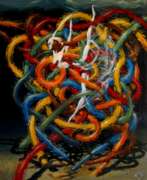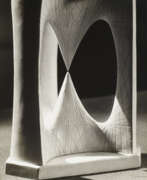Conceptual art

Conceptual art
Conceptual art is a transformative movement that emerged in the 1960s, prioritizing ideas above the aesthetic execution or material presence of art. It was a departure from the traditional focus on visual form, instead emphasizing the concept as the core of artistic creation. This approach challenges viewers to question the nature of art itself, placing significance on intellectual engagement and interpretation.
Pioneered by visionaries such as Joseph Kosuth and Sol LeWitt, conceptual art often utilizes language and documentation to express its ideas. Kosuth's "One and Three Chairs" is a seminal work that invites contemplation about representation and meaning. Works like Lawrence Weiner's statements and John Baldessari's photo series underscore the movement's focus on idea over form, often preserved in the annals of art history through photographs and written descriptions rather than physical objects.
Conceptual art's legacy continues to influence contemporary artistic practices, inviting ongoing discourse about the evolution of art. For collectors and art connoisseurs, keeping abreast of conceptual art's developments enriches one's understanding of modern and postmodern art. Subscribing to updates on new sales and auction events related to conceptual art is invaluable for those invested in its profound narrative.
| Country: | America, Europe, France, Russia, USA, USSR (1922-1991) |
|---|---|
| Start of the period: | 1968 |















